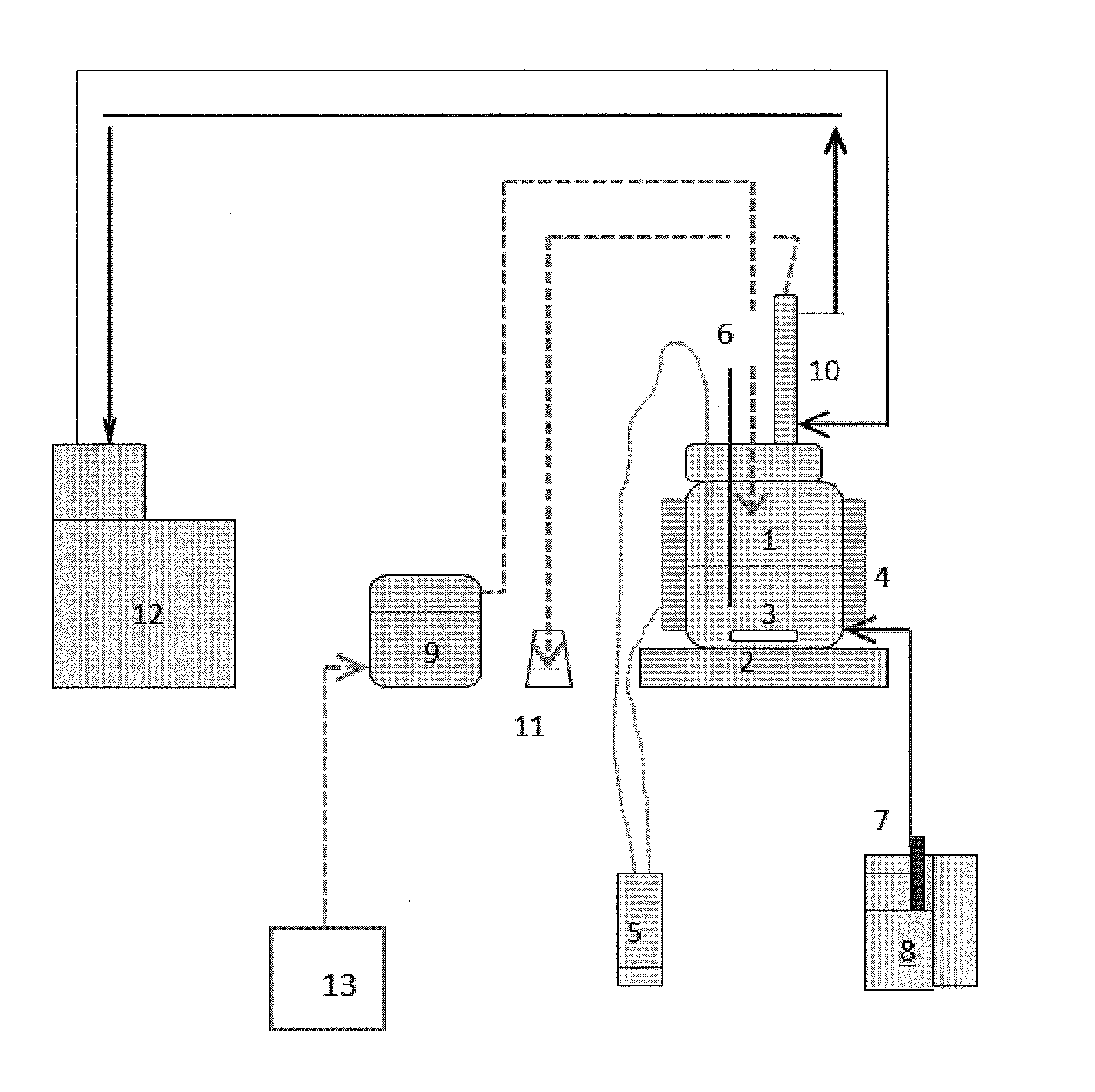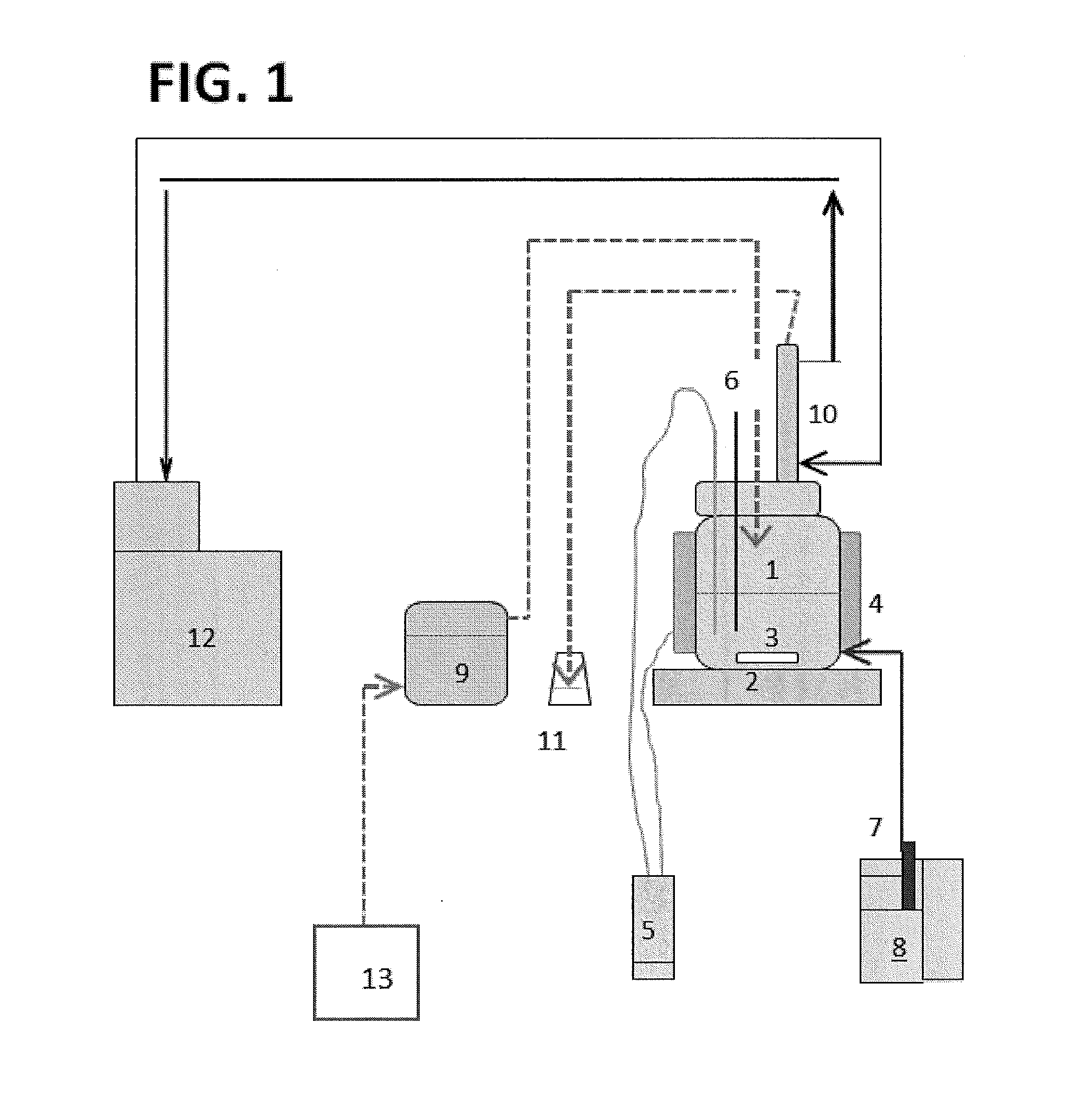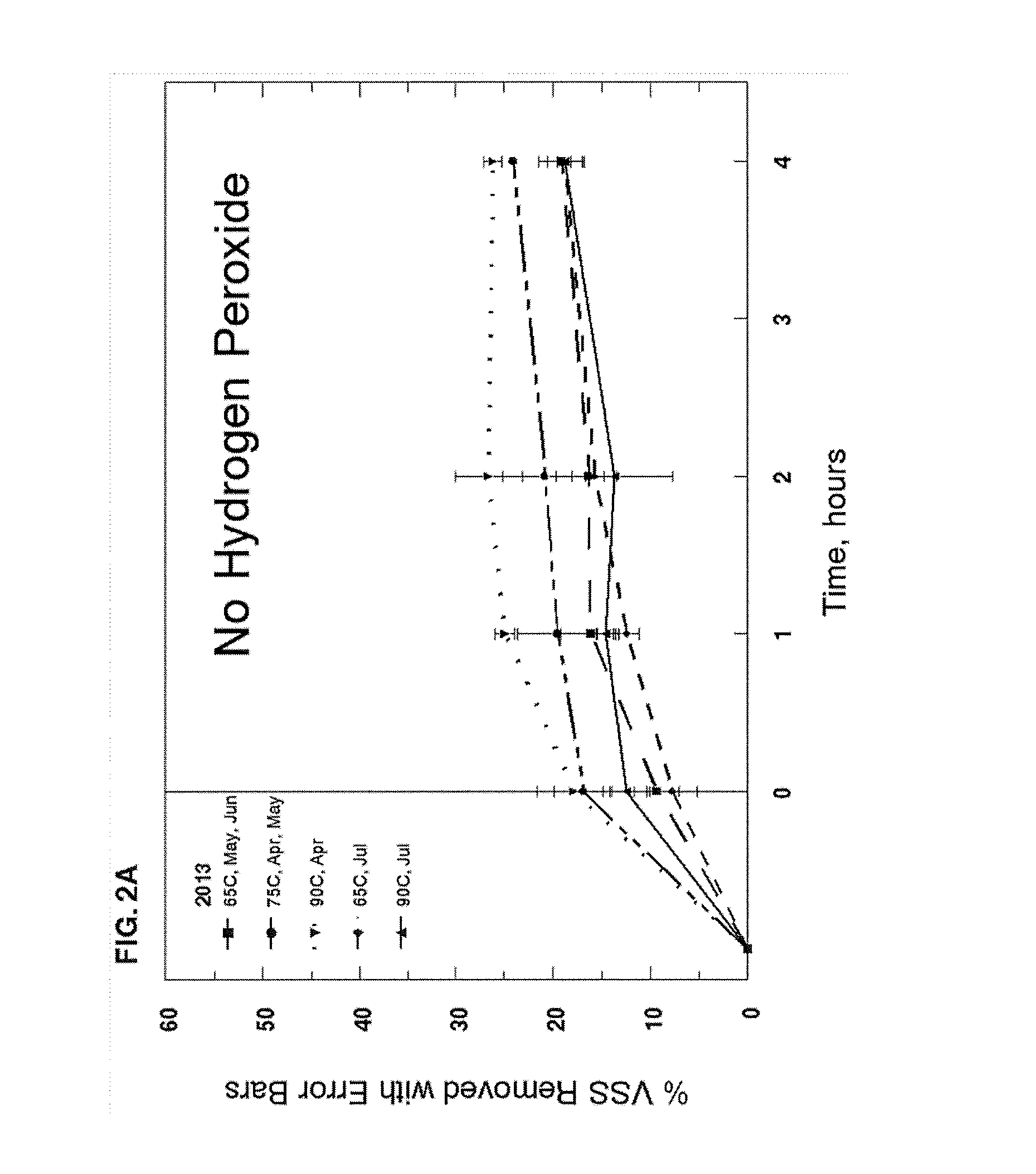Thermo-oxidation of municipal wastewater treatment plant sludge for production of class a biosolids
a technology of municipal wastewater treatment and biosolids, which is applied in the direction of biological water/sewage treatment, sludge treatment by oxidation, multi-stage water/sewage treatment, etc. it can solve the problems of contaminating ground water resources, exceeding the sorption capacity of soil, and accompanied by numerous and ongoing public complaints, so as to reduce the vss and var, and prevent foaming
- Summary
- Abstract
- Description
- Claims
- Application Information
AI Technical Summary
Benefits of technology
Problems solved by technology
Method used
Image
Examples
Embodiment Construction
[0026]Reference will now be made in detail to the present embodiments of the present invention, examples of which are illustrated in the accompanying drawings, wherein like reference numerals refer to the like elements throughout. The embodiments are described below in order to explain the present invention by referring to the figures.
[0027]To achieve reduction of VSS on a batch basis, waste activated sludge (WAS) is introduced into a reactor; the concentration of the WAS is adjusted to about 1.5% total suspended solids (TSS) with secondary effluent, if necessary; the reactor is mixed; the reactor is pre-heated to an operating temperature in a range of about 65° C. to about 90° C.; subsequently, a 50% solution of laboratory grade H2O2 is introduced into the bottom of the reactor; and the contents are heated for at least 4 hours.
[0028]The H2O2 is introduced to the reactor upon reaching the operating temperature at a concentration range of about 0.05 to 0.2 g / g VSS over about 30 minut...
PUM
| Property | Measurement | Unit |
|---|---|---|
| operating temperature | aaaaa | aaaaa |
| temperature | aaaaa | aaaaa |
| residence time | aaaaa | aaaaa |
Abstract
Description
Claims
Application Information
 Login to View More
Login to View More - R&D
- Intellectual Property
- Life Sciences
- Materials
- Tech Scout
- Unparalleled Data Quality
- Higher Quality Content
- 60% Fewer Hallucinations
Browse by: Latest US Patents, China's latest patents, Technical Efficacy Thesaurus, Application Domain, Technology Topic, Popular Technical Reports.
© 2025 PatSnap. All rights reserved.Legal|Privacy policy|Modern Slavery Act Transparency Statement|Sitemap|About US| Contact US: help@patsnap.com



